“It’s all about Darwinism and survival”: fintech feature part 2 with Blockchain HELIX, Kantox, and fino digital
In part 1 we promised you that we still have more expert opinions in the pipeline, ready to discuss the future of banking and finance and what it holds for us! In the prelude, Nordic hotshot meniga suggested that banks face a real risk of losing their position of power as players like snapchat or WeChat enter in disguise – along with giants like Amazon and thousands of emerging fintechs. However according to meniga, a CODE_n alumnus, making digital banking a drastically better environment as well as gathering speed in providing a top-notch user experience could be a lifeline that allows banks to keep pace with the emerging competitors. What do other players think? Three additional visionary fintechs predict where the digital disruption of the banking and finance sector will lead. But be prepared – they don’t offer easy answers!
CODE_n in a conversation with the CEOs of Alumni Blockchain HELIX, Kantox, and fino digital.
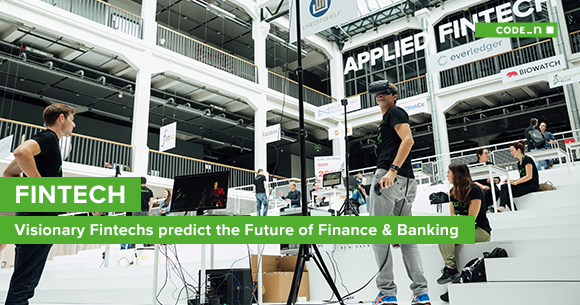
Lisa: What are the obstacles and challenges faced by banks these days?
Oliver Naegele, CEO of Blockchain HELIX: Banks need to think beyond industry borders and transform faster into information providers.
Philippe Gelis, CEO of Kantox: Traditionally, the banking industry has been a sector with high barriers to entry, mainly due to physical and regulatory costs. However, technology (and especially digitalization) is removing many of the physical costs while regulators are becoming more likely to let new players enter the game. This means that banks need to accept that they will coexist with new actors, from tech giants to fintech companies, and this threatens their oligopoly in the different bank verticals. Their biggest challenge is then not only trying to stay competitive with their product offering but to understand that in the digital world, competition is as important as collaboration. In other words, their challenge is not only having cutting-edge, tech-driven products but redefining their business model, especially regarding distribution and culture. They also need to stay up to date to keep pace with the digital era.
Florian Christ, CEO of fino digital: Today’s customers are used to shopping online and expect their needs to be met and satisfied immediately through a wide range of products and services. They increasingly expect the same from their bank. The classic banking world is increasingly turning into a cross-industry ecosystem, with integrated financial services. Banks need to adapt their business model to the current changes in customer behavior. New technologies are offering a wide variety of opportunities for banks to match these needs. New technologies and efficient processes have been a prerequisite for this for a long time. The real challenge is the accelerated speed at which this is happening.
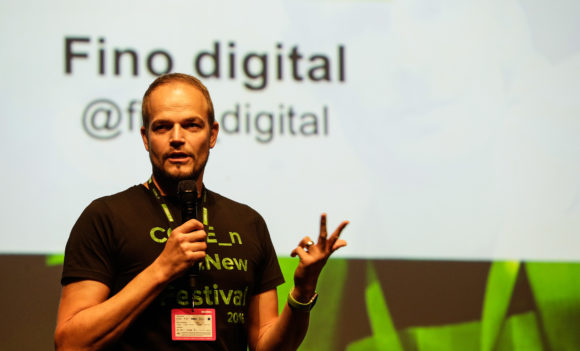
Startup pitches in the cluster Applied Fintech: Florian Christ of fino digital live on stage at new.New Festival 2016
Lisa: What will the banking sector look like in five years time? As a startup operating in this field, please tell us a little bit about the trends and topics.
Oliver Naegele, CEO of Blockchain HELIX: Definitely Blockchain. It opens a door to new business models.
Philippe Gelis, CEO of Kantox: The first fintech wave placed many tech startups in the spotlight by challenging long-established banks and their antiquated product offerings. For fintechs, this meant coupling lower rates and transparent prices with a superior user experience and cutting-edge interfaces. However, banks have the resources to react to and even fend off these threats. By reducing prices or allocating tons of money to UI/UX, these established institutions can swiftly neutralize or at least mitigate any upstart challenges. This implies that the future of fintech relies on the creation of sophisticated new tech-driven products, i.e. new solutions which are tricky and very hard for banks to replicate.
Florian Christ, CEO of fino digital: Banking customers are increasingly mature in outlook and digitalization is now unstoppable, so banks and fintechs will need to add value for the customer. Today, more and more services have to be mobile, simple, and quick to use.
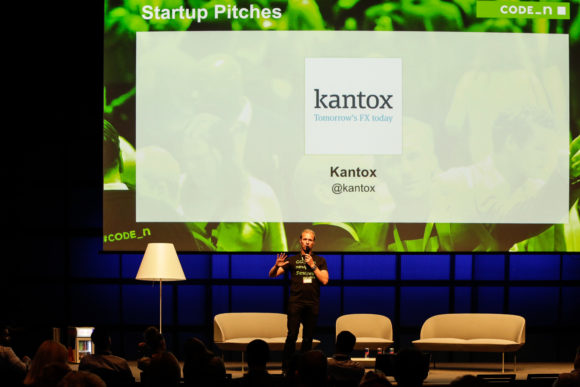
Michael Schimmel, Chief Commercial Officer of Kantox, pitching the business model to the enthusiastic audience
Lisa: What are the opportunities and challenges of these developments?
Oliver Naegele, CEO of Blockchain HELIX: You need to rethink your old business models and need to be open to consortia and information exchange. Your business will vanish in an instant if you’re not part of different consortia.
Philippe Gelis, CEO of Kantox: The challenges for fintechs are obvious and follow on from the previous answer. Those whose proposition is not solid enough will be busted by banks’ big pockets. The good news is that there are always windows of opportunity for small but fast and flexible players, whose solutions adapt quicker to market demands. It’s all about Darwinism and survival.
Florian Christ, CEO of fino digital: By offering services that add real value for the customer, modern banks will have a real market advantage compared to their competitors. One advantage fintechs have already is that they can develop tools and services in close collaboration with the banks and their customers. They can act more freely in their decisions. So as a result, they can react more quickly.
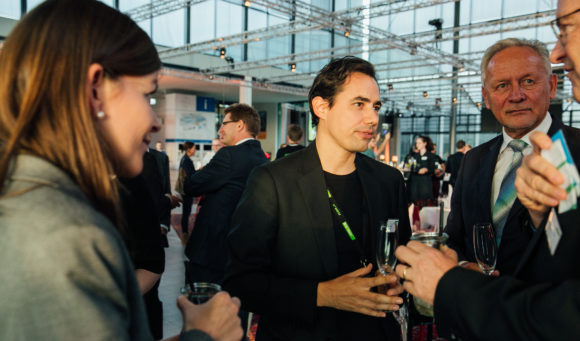
Pioneers Dinner: Oliver Naegele of Blockchain HELIX in an lively exchange at the precedential dinner event of the new.New Festival 2016
Lisa: How will your startup contribute to disruption in the financial sector?
Oliver Naegele, CEO of Blockchain HELIX: Blockchain HELIX is building a digital identity solution for a new trustable web. The whole “know your customer” process (KYC) will be optimized by sharing identity information between different financial services providers. This will save billions of dollars.
Philippe Gelis, CEO of Kantox: We’re the first and only market player to give companies the possibility to completely automate the monitoring, execution, and reporting of their FX activities. With Kantox’s micro-hedging solutions, firms increase their business efficiency significantly while eliminating FX risk from their business.
Florian Christ, CEO of fino digital: fino is a pioneer in digital switching services for banks. As the first provider of a digital account switch solution, fino has solved a major problem for banks. Our account switch provides a modern solution thanks to a digital, paperless process. This minimizes the effort required within organizations when transferring direct debits, standing orders, or when closing accounts. Instead of researching and informing all transaction partners (such as the utilities, telephone service providers, or landlords), the fino account switch service automatically handles the entire complex procedure with just a few clicks. Our other switching products, such as the credit card and deposit account switch, follow the same principles.
Lisa: Thanks so much for sharing your expertise with the CODE_n Community. We wish you the best of luck as you continue to grow your businesses. We’ll keep reporting on how things are developing there – and of course keep an eye on the radical changes impacting on the banking sector.


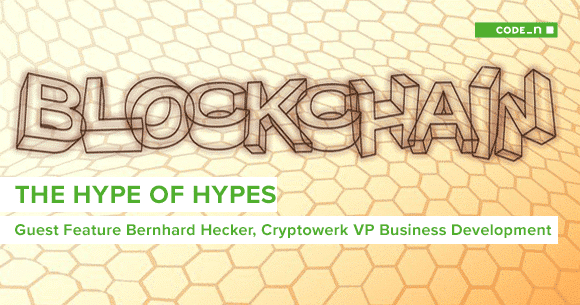


Write a comment